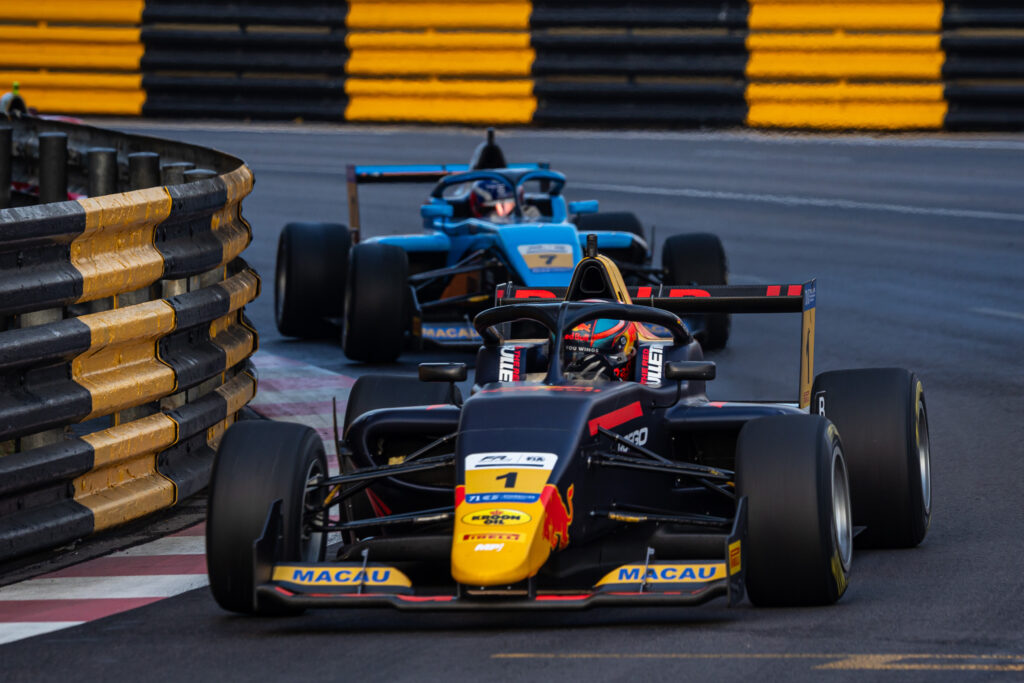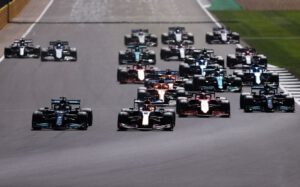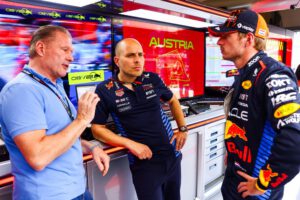Formula 3 (F3) is widely regarded as one of the most important training grounds for aspiring Formula 1 (F1) drivers. As the third tier of single-seater open-wheel racing, Formula 3 has earned a reputation for producing some of the most talented drivers who eventually make their way to the pinnacle of motorsport. But Formula 3 is not just about developing the next generation of F1 stars. It is a unique and thrilling category in its own right, offering fans high-speed action, intense competition, and an invaluable platform for young drivers to showcase their skills.
In this introduction to Formula 3 racing, we’ll explore the history of the sport, its structure, the teams and drivers that make it special, and why it holds such a crucial role in the motorsport ladder. Whether you’re a seasoned motorsport fan or new to the world of single-seater racing, this guide will provide a comprehensive overview of Formula 3, highlighting its significance and the exciting journey it offers to both drivers and fans.
What is Formula 3?
Formula 3 is a single-seater, open-wheel racing category, serving as a crucial stepping stone for drivers seeking to progress to higher levels of motorsport, particularly Formula 1. While it may be the third-tier category in terms of global racing classifications, Formula 3 provides a highly competitive environment where young drivers can hone their skills before advancing to the world’s most prestigious racing series.
F3 cars are typically smaller and less powerful than those seen in Formula 1, with engines around 3.4 liters and producing around 200 to 250 horsepower. However, despite the power difference, Formula 3 cars are still incredibly fast, capable of reaching speeds upwards of 270 km/h (167 mph), making for thrilling races. The cars also feature advanced aerodynamic packages, slick tires, and lightweight chassis, providing an excellent platform for drivers to develop their racecraft.
While F1 teams are typically represented by some of the best drivers in the world, F3 serves as a proving ground for the next generation of stars. It is here where drivers begin to fine-tune their understanding of race strategy, car control, and the sheer mental and physical endurance required to compete at the top level. In addition to providing a platform for young talent, F3 races are also watched closely by F1 teams, many of whom scout potential drivers for future signings.
The Evolution of Formula 3
The origins of Formula 3 can be traced back to the 1950s when the category first emerged in Europe as a more affordable alternative to the higher-profile Formula 2 and Formula 1. Initially, F3 cars were based on the existing Formula 2 cars but with smaller engines and less advanced technology. This made the racing more accessible and allowed for greater participation among aspiring drivers who couldn’t afford the costs associated with Formula 1 racing.
Throughout the 1960s and 1970s, Formula 3 quickly gained popularity as a proving ground for young, talented drivers. Many of the legends of motorsport, including Ayrton Senna, Michael Schumacher, and Lewis Hamilton, began their careers in Formula 3 before moving on to F1. The success of F3 as a training ground for F1 talent solidified its place as an essential part of the motorsport ladder.
By the 1980s, Formula 3 had become more established as a standalone series, and national F3 championships were introduced across Europe and beyond. The series continued to evolve, with technological advancements in car design and increased sponsorship attracting top drivers from around the world.
In 2019, a major restructuring took place within Formula 3. The FIA launched a new, unified global championship, replacing various regional F3 series that existed at the time. The new FIA Formula 3 Championship is now part of the official F1 support races, taking place at prestigious venues around the world and featuring a mix of national and international drivers. This restructuring helped bring the series to a wider audience and provided drivers with greater exposure on the global stage.
The Structure of Formula 3
The current Formula 3 Championship is a multi-race series that runs alongside the Formula 1 calendar at many of the same venues. Races typically take place during Grand Prix weekends, giving F3 drivers the rare opportunity to compete on the same prestigious circuits that are the backdrop to F1’s most thrilling events.
The championship is contested by teams and drivers from around the world, with a grid that typically consists of 24 drivers. The teams range from independent outfits to large, well-established racing organizations, many of which have connections to F1 teams or major automotive manufacturers. This diversity of teams and drivers makes for an exciting and unpredictable championship, with each race offering its own challenges and drama.
The cars used in the FIA Formula 3 Championship are designed and manufactured by a single supplier, ensuring that the field remains as competitive as possible. The car is known as the “F3 2019” chassis, and it is powered by a 3.4-liter V8 engine capable of producing up to 380 horsepower. The uniformity of the cars means that the key to success lies in the drivers’ skill, strategy, and teamwork, rather than in car development.
Each race weekend consists of a series of practice sessions, qualifying, and multiple races, typically including a feature race and a sprint race. Points are awarded based on race finishing positions, with additional points for pole positions and fastest laps, ensuring that drivers must remain consistent throughout the season.
The driver with the most points at the end of the season is crowned the FIA Formula 3 World Champion. This title is a significant achievement in itself, but it also marks a key milestone for drivers aspiring to move up to Formula 2 or Formula 1.
Key Drivers Who’ve Come from Formula 3
One of the defining aspects of Formula 3 is its role as a launchpad for future Formula 1 stars. Over the years, many of the sport’s biggest names have competed in Formula 3 before making their way to F1, including some of the most legendary drivers in history.
- Ayrton Senna: The Brazilian icon, widely regarded as one of the greatest drivers in F1 history, won the 1983 British Formula 3 Championship. Senna’s time in F3 was critical in shaping his racing skills and his eventual move to F1.
- Michael Schumacher: The seven-time F1 World Champion, Michael Schumacher, spent a year in German Formula 3 before making his F1 debut. His success in F3 laid the foundation for a career that would change the sport forever.
- Lewis Hamilton: Before making his F1 debut in 2007, Lewis Hamilton dominated the 2006 Formula 3 Euro Series, winning the championship in a year that would elevate his profile as one of F1’s brightest future stars.
- Sebastian Vettel: Vettel won the 2004 Formula 3 Euro Series, securing his place as one of the top young drivers on the global stage before moving on to F1, where he would go on to win four World Championships.
- Charles Leclerc: The 2017 Formula 3 European Champion, Leclerc, made an immediate impact in F1, joining Ferrari in 2019. His success in F3 helped catapult him to the top level of motorsport.
These drivers are just a few examples of the many who have passed through Formula 3 on their way to greatness in Formula 1. F3 provides an unparalleled environment for young talent to develop their skills, gain exposure, and attract the attention of F1 teams looking for their next star.
Why Formula 3 Matters
Formula 3 is a vital component of the motorsport ecosystem, not only as a platform for developing future F1 drivers but also as a thrilling racing series in its own right. The tight battles on track, the diversity of drivers from all over the world, and the importance of teamwork and strategy make Formula 3 a must-watch for any motorsport fan.
The series also plays an important role in the evolution of car technology and racing strategies. Although F3 cars are not as fast or technologically advanced as F1 cars, they still require an immense amount of skill to drive. The cars are often more closely matched in terms of performance, leading to more overtaking opportunities, on-track drama, and close races.
For fans of motorsport, F3 offers a unique glimpse into the future of Formula 1. The drivers who compete in F3 are often just one step away from breaking into the biggest racing series in the world. Their performances and battles on the track give a tantalizing preview of what’s to come in F1, making F3 a key part of the motorsport viewing experience.
Moreover, Formula 3 provides an important opportunity for sponsors and partners to support young talent and build relationships with the sport at an early stage. Many of the drivers who succeed in F3 go on to secure lucrative sponsorship deals and partnerships, both as individuals and as part of their teams.
Conclusion
Formula 3 is more than just a racing category; it’s a crucial part of the motorsport ladder, offering young drivers the opportunity to develop the skills, experience, and mental toughness required to succeed at the highest levels of racing. While the drivers and teams compete fiercely for the championship, the true purpose of Formula 3 is to act as a launching pad for the careers of future Formula 1 stars.
As we continue to watch this exciting and competitive series unfold, it’s clear that Formula 3 will remain a key component of the motorsport world, attracting talented drivers, passionate fans, and dedicated teams. For fans of Formula 1, watching the stars of tomorrow battle it out in Formula 3 today is a thrilling experience, as we witness the next generation of champions on their way to the top.











More Stories